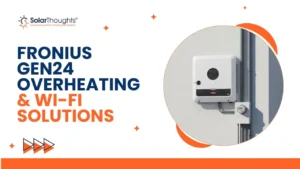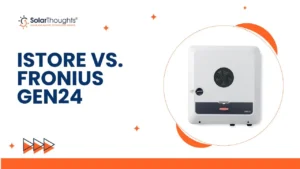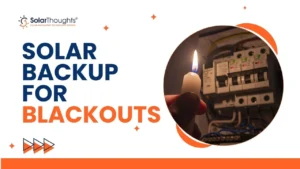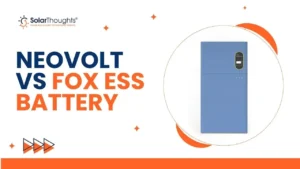Most households use about 30 kWh of electricity daily. Your home energy system needs a reliable solar battery that works through the night. This knowledge plays a vital role in planning your setup. Our team at SolarThoughts® has watched interest in solar battery storage grow rapidly. Australian homes installed nearly 7,000 energy storage systems by mid-2016 alone.
Table of Contents
ToggleSeveral factors affect how long solar batteries last. Lithium-ion batteries usually work for 2-5 years before they lose substantial capacity. The complete lifespan of solar batteries ranges from 5 to 15 years. A 10 kWh battery powers critical electrical systems in an average house for at least 24 hours during outages. Smart energy management can extend this time even further.
Solar batteries store energy that powers your home at night. This stored power will give you uninterrupted supply that keeps your home comfortable and secure. Weather-related power outages have jumped by about 78% between 2011 and 2021. More homeowners now think about solar batteries to achieve energy independence.
This piece explores nighttime battery duration factors, performance of different battery types, and practical ways to maximize your battery’s nighttime capacity. Let’s make your future brighter with fully charged batteries.
How Solar Power Works at Night with Battery Storage
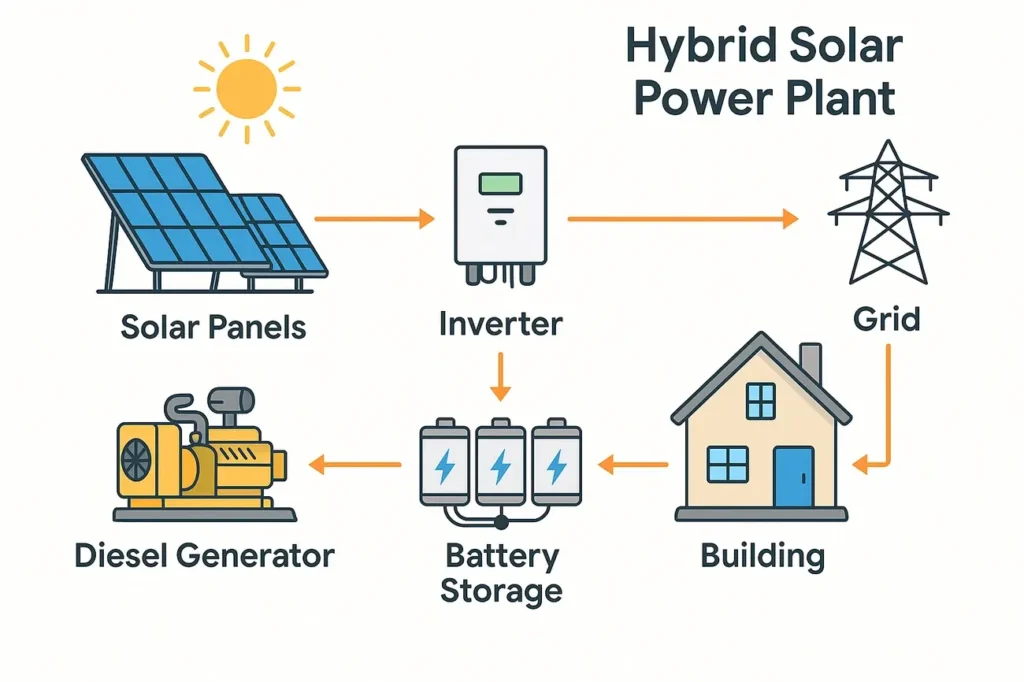
Solar panels convert sunlight into electricity. Many people think they generate power after sunset, but they don’t. Solar panels produce no electricity at night. This creates a need to store energy for homes that want to use solar power 24/7.
Do solar panels store energy for night use?
Solar panels can’t store energy by themselves. They work as converters rather than storage devices. During daylight hours, they turn sunlight into direct current (DC) electricity. You must use this electricity right away or send it back to the grid without a storage system. Homeowners with solar panels but no battery storage continue to rely on the grid for electricity at night.
Role of solar batteries in nighttime energy supply
Solar batteries fix this nighttime energy issue. They store extra electricity made during peak sunlight hours. Your battery system charges when your panels make more power than your home uses instead of sending that extra power to the grid. Your home switches to this stored energy naturally once the sun sets and panels stop working.
The process works like this:
- Your battery begins supplying energy to your home through its inverter.
- The inverter changes the stored energy into usable AC power
- Your home’s switchboard distributes this electricity to power your appliances.
A full solar battery can power your home for 10-12 hours at night. Homes using basic appliances like lights and fans might stretch a 10kWh battery to last 13-14 hours.
What happens when the battery runs out overnight?
Your system switches to grid electricity once your battery runs out of stored energy. Modern systems handle this change naturally without any power interruption. The grid connection serves as a crucial backup, especially when you have high energy needs or during long periods of low solar generation.
Smart energy management systems make this process better. They find the most effective energy source throughout day and night. These systems direct power where it’s needed most – to appliances, batteries, or back to the grid.
Choosing the Right Battery for Nighttime Use
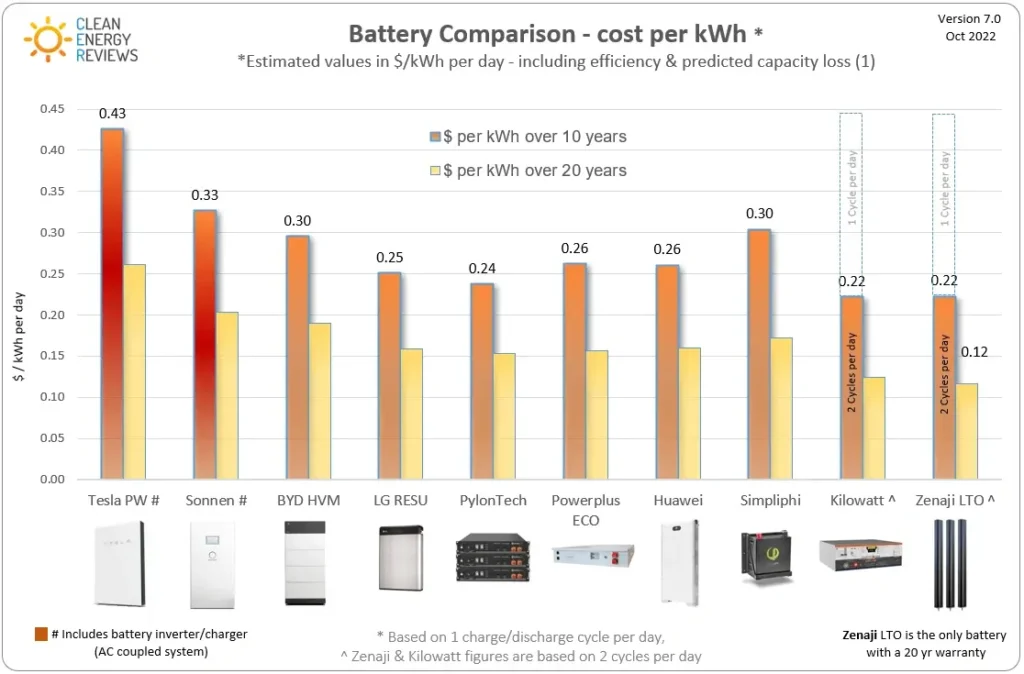
Your choice of solar battery plays a huge role in powering your home after the sun goes down. Let’s look at the main differences between popular battery technologies that will help you make a smart choice.
Comparing lithium-ion, LFP, and lead-acid batteries
These three battery types each bring their own benefits for nighttime power:
LFP (Lithium Iron Phosphate) batteries stand out as the top pick for home solar systems because they’re incredibly safe and stable temperature-wise. They really shine with their cycle life of 6,000-10,000+ cycles, which puts them way ahead of other options.
NMC (Lithium Nickel Manganese Cobalt) batteries pack more power into a smaller space. The trade-off is they don’t last as long and run a higher risk of overheating than LFP batteries.
Lead-acid batteries remain a popular choice because they cost less upfront. The downside is they don’t handle deep discharges well and usually need replacement after 3-5 years.
How battery type affects solar battery life
The type of battery chemistry determines how long it lasts. Lithium-ion batteries typically work well for 10-15 years, while lead-acid batteries need replacement after just 3-5 years.
Each battery type handles discharge differently. You can safely use 80-90% of a lithium-ion battery’s capacity without causing damage. Lead-acid batteries need more careful handling – using more than 50-70% of their capacity can harm them.
These batteries also differ in how well they store energy. Lithium-ion batteries keep 95-98% of energy during charging, while lead-acid batteries only manage 80-85%. SolarThoughts® can help if you need solar battery storage in Brisbane.
Hybrid inverters and battery compatibility
Hybrid inverters integrate both solar and battery inverter functions into a single device. Your battery must work well with your inverter – a mismatch could lead to poor performance or damage your equipment.
Here are three key things that need to match:
- Voltage and power ratings between your inverter and battery
- Communication protocols that work together
- The right inverter type and size for your battery system
Modern systems are flexible enough to grow with you. AC coupling lets you add battery storage to your existing solar setup without getting a new inverter.
Optimizing Battery Usage for Longer Nighttime Power
Your solar battery’s nighttime performance depends on smart energy management. The right optimization techniques help your battery power your home longer after sunset and give you better energy independence.
Smart energy management systems
Smart energy management systems work as your solar setup’s brain. They process data from connected devices and make up-to-the-minute decisions about energy allocation. These systems watch your solar production, storage levels, and household power use to optimize power flow automatically.
Advanced platforms like GoodWe’s SEMS provide complete monitoring of photovoltaic plants. You’ll see visual charts that show energy generated, stored, consumed, and exported. More importantly, these systems can prioritize critical devices during outages to preserve battery life for essential functions.
Your home automation system connects with these platforms to route power where needed. This reduces waste and makes your backup power last longer.
Load shifting and appliance scheduling
Moving energy usage from nighttime to daylight hours is one of the quickest ways to extend battery life. This method doesn’t mean you need to use less power – you just need to be smarter about when you use it.
High-power appliances that work best during daytime include:
- Climate control systems and water heaters
- Washing machines, dryers, and dishwashers
- Pool pumps and filtration systems
Running these power-hungry devices during peak solar production can help you save approximately 24.3% on your electricity costs. Community settings see savings up to 11.8%.
Avoiding over-discharge to extend battery life
Your battery’s depth of discharge (DoD) affects its lifespan directly. Your battery performs best when its charge level stays within manufacturer-recommended limits.
Most systems come with a “BatteryLife” feature that adjusts the minimum charge state based on available solar energy. This stops harmful low-charge states from lasting too long, especially when sunlight is limited.
Lithium batteries need a minimum sustain voltage of 12.5V. The system charges from the grid automatically when needed to prevent damage. Keeping discharge depth between 20-80% lets batteries run efficiently without stressing components.
Planning for Backup: How Long Do Solar Batteries Last in Outages?
Power outages have grown by approximately 78% from 2011 to 2021. Solar battery backup systems have become vital. Your backup capacity knowledge will help keep your lights on during grid failures.
Typical backup duration for 10kWh systems
Research shows a standard 10kWh battery can power an average house’s critical electrical systems for at least 24 hours without heating and cooling. Homes that use only basic appliances during an outage can get 10-12 hours of continuous power from the same battery.
Your household size affects energy consumption. A 10kWh battery provides 24-36 hours of power for a small apartment. Large homes with 5+ bedrooms might get only 3-6 hours of backup. Your backup duration relies on:
- Your solar system’s size
- Power usage during outages
- Priority appliances’ energy requirements
Battery performance during multi-day outages
Batteries need careful management beyond 24 hours. A Lawrence Berkeley National Laboratory study reveals that a 10kWh battery meets backup needs during 3-day outages in all but one of the U.S. counties, excluding heating and cooling systems.
Your battery enters standby mode at less than 10% capacity to prevent damage. The system recharges automatically from available solar each hour during daylight (8 AM to 4 PM), which extends your backup duration.
Medical equipment and critical load planning
Households with medical equipment need specialized planning. Modern systems can power vital medical devices for 24-48 hours using stored energy alone. SolarThoughts® can help if you need solar battery storage in Brisbane.
A critical load panel gives power to your most important devices during outages. Installation costs range from AUD 305.80 to AUD 458.70 for a 10kWh battery. This panel prioritizes essential appliances such as refrigerators, lights, and medical equipment.
Medical equipment backup experts suggest:
- Add a 20% capacity buffer for power fluctuations
- Plan for 48 hours of backup without solar input
- Skip high-consumption appliances that drain batteries faster
Conclusion
How long a solar battery lasts at night depends on the battery type, your home’s energy usage, and how well the system is managed. Lithium iron phosphate (LFP) batteries stand out for their 6,000–10,000+ cycle life, 10–15 year lifespan, and superior safety. In contrast, traditional lead-acid batteries often require replacement within 3–5 years. Smart energy habits—like running high-load appliances during the day—can extend your battery’s nighttime performance while cutting electricity costs by over 24%.
To maximize your solar battery’s efficiency and backup capability, maintaining a 20–80% depth of discharge and installing a critical load panel is key. During a power outage, a 10kWh solar battery can keep essential appliances running for up to 24 hours, and even longer for low-energy homes. At SolarThoughts®, we believe that optimizing your battery system is the first step toward reliable energy independence—keeping your lights on after sunset and during blackouts. If you are looking for solar panel installation in Brisbane, contact SolarThoughts today!
FAQs
Q1. How long can a typical solar battery power a home at night?
A fully charged solar battery can usually power an average home for 10-12 hours at night. For households using only essential appliances like lights and fans, a 10kWh battery might last up to 13-14 hours.
Q2. What factors affect how long a solar battery lasts overnight?
The duration depends on factors like battery capacity, household energy consumption, and the types of appliances being used. A small apartment might get 24-36 hours from a 10kWh battery, while a large house might only receive 3-6 hours of backup.
Q3. How can I extend my solar battery’s nighttime performance?
To maximize battery life at night, use smart energy management systems, practice load shifting by running high-consumption appliances during the day, and avoid over-discharging the battery. Keeping the depth of discharge between 20-80% can significantly extend battery lifespan.
Q4. What type of solar battery is best for nighttime use?
Lithium Iron Phosphate (LFP) batteries are often preferred for home solar systems due to their safety, thermal stability, and long cycle life of 6,000-10,000+ cycles. They typically last 10-15 years compared to lead-acid batteries that may need replacement after 3-5 years.
Q5. How long can a solar battery provide backup during a power outage?
A standard 10kWh battery can power critical electrical systems in an average house for at least 24 hours during an outage, excluding heating and cooling. For homes using only essential appliances, the same battery might provide 10-12 hours of continuous power.
Our Popular Services
Top-rated solar panels company in Brisbane | Solar Panel Installation in Gold Coast | Upgrading existing Solar system | Solar Panel Repairs and Maintenance | Solar Panel Cleaning Service | Solar Battery Installations | Solar Inverter Installations


